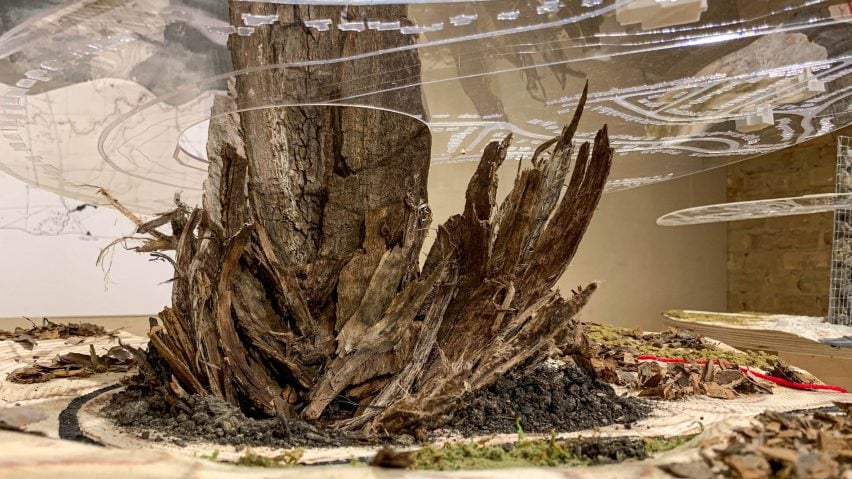
Nine student projects that are represented by intricate 3D models
Dezeen School Shows: in this roundup, we spotlight nine student projects featured in Dezeen's School Shows, which present meticulously detailed architectural models.
The students, who are enrolled in both undergraduate and postgraduate architecture degree courses, have utilised a spectrum of materials to create their models, including clay, concrete, wood and plastic.
The act of creating architectural models by hand is being replaced over time by increasingly sophisticated digital CAD programs and rendering software.
The models vary in appearance according to what they intend to show, for example, sectional models show a building that has been cut in half to show the interior and site models show an entire building and a portion of its surroundings.
These projects come from students enrolled on architecture and interior design courses at international institutions including UCLA, University of Hong Kong, University of Toronto, Oxford Brookes University, De Montfort University, Manchester School of Architecture and Norwich University of the Arts.
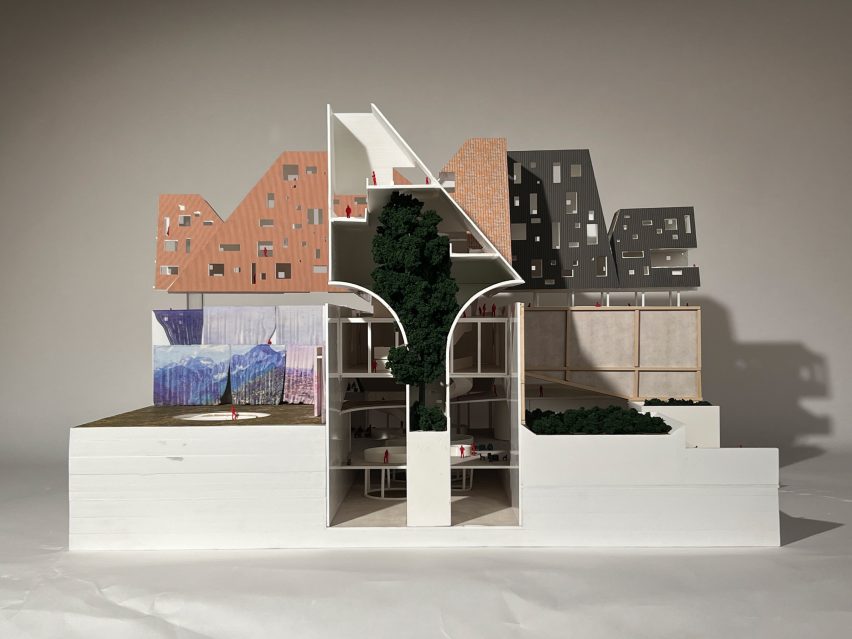
Future Histories: LA's Film Industry by Morgane Copp and Wei Qiu
Morgane Copp and Wei Qiu's mixed media model displays a cross-sectional view of a former Los Angeles movie studio.
The architecture students included red scale figures to show the scale of the space, as well as stage curtains and miniature trees and shrubs to bring the model to life.
"We speculate on the future of abandoned sound stage typologies of movie studios in Los Angeles due to the emerging technologies for digital scene-making, which will eventually render the currently required physical spaces obsolete," said Copp and Qiu.
"By flipping the figure-ground, removing the roof of the obsolete sound stages, and building a program in between these containers, we imagine a new urban fabric."
Students: Morgane Copp and Wei Qiu
School: UCLA
Course: Architecture
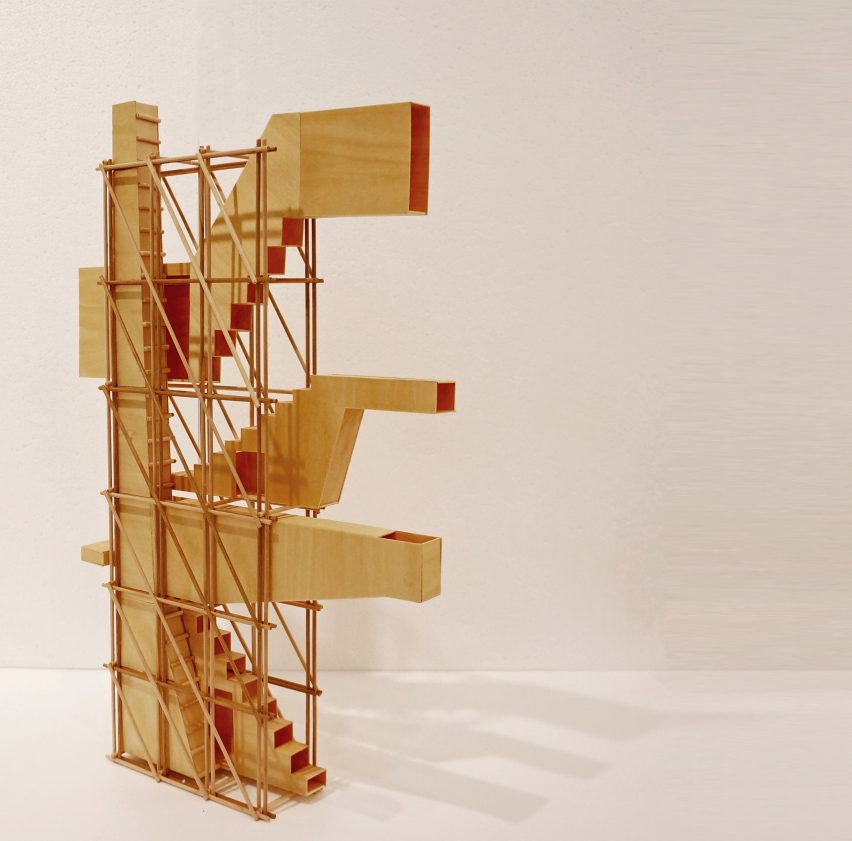
Intervening in the City – Ground or Facade? by Jiang Xinzi
During their time studying architecture at the University of Hong Kong, student Jiang Xinzi created a structural scheme that explores how voids between buildings can be more effectively utilised.
The structures create opportunities for climbing via stairs and ladders, as well as platforms that could be used for a range of purposes, explained in part through the medium of a plywood model.
"The design responds to the different levels of the city in two ways – creating different inhabitable spaces for a variety of views, shifting the ground level with each platform and allowing the inhabitants to climb along the wall for multiple uses," said Xinzi.
"The design rethinks the relationship between the ideas of facade and ground, and imagines the way we inhabit the space between them."
Student: Jiang Xinzi
School: University of Hong Kong
Course: Architecture
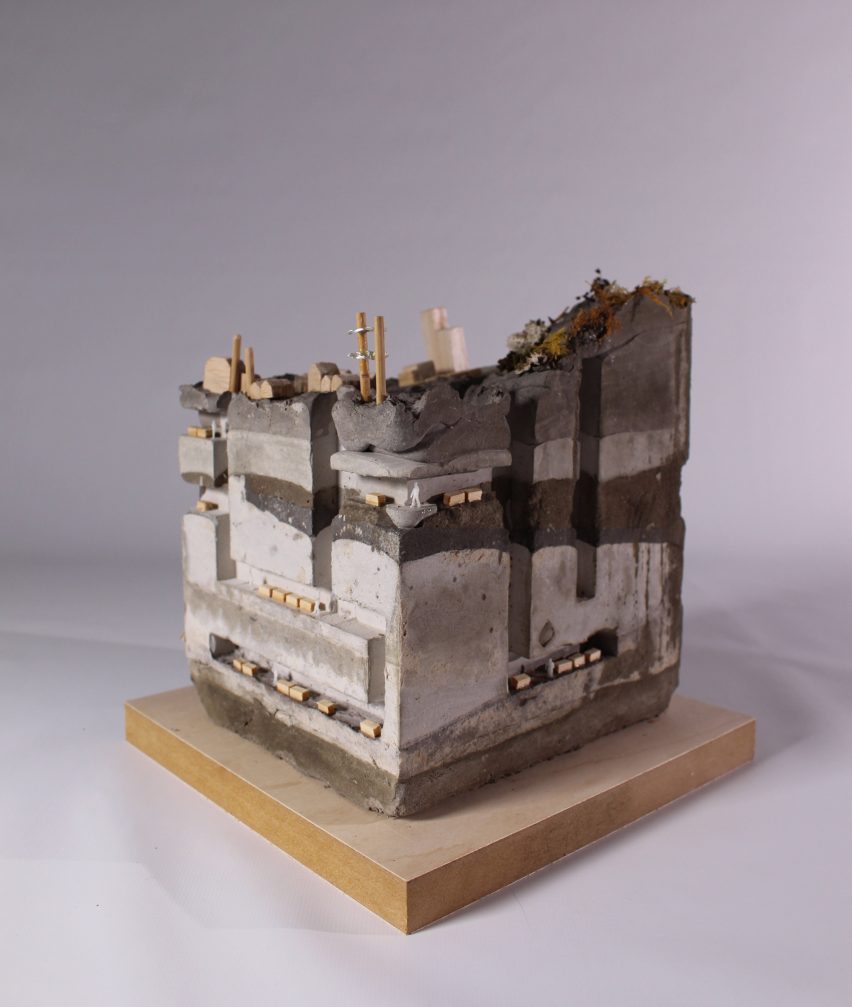
Timescapes Workshop Sculpture Exploring the Mining Heritage of the Site by Niya Lijo Kankapadan
During their time working towards their architecture degree, Niya Lijo Kankapadan created a project based in the Bradford district of Manchester that sheds light on the area's coal mining heritage.
The model shows an underground view of the project, which proposes subterranean tunnels that both educate about the environmental impact of mining and aid in the research of soil.
"Kankapadan's project celebrates the rich coal mining past of the Bradford area of Manchester – the proposal aims to provide a space to commemorate this history," Kankapadan.
"Alongside gallery and exhibitions, spaces for the research of the soil condition on site are part of the proposal helping understand the impact of mining on the natural environment."
Student: Niya Lijo Kankapadan
School: Manchester School of Architecture
Course: Architecture
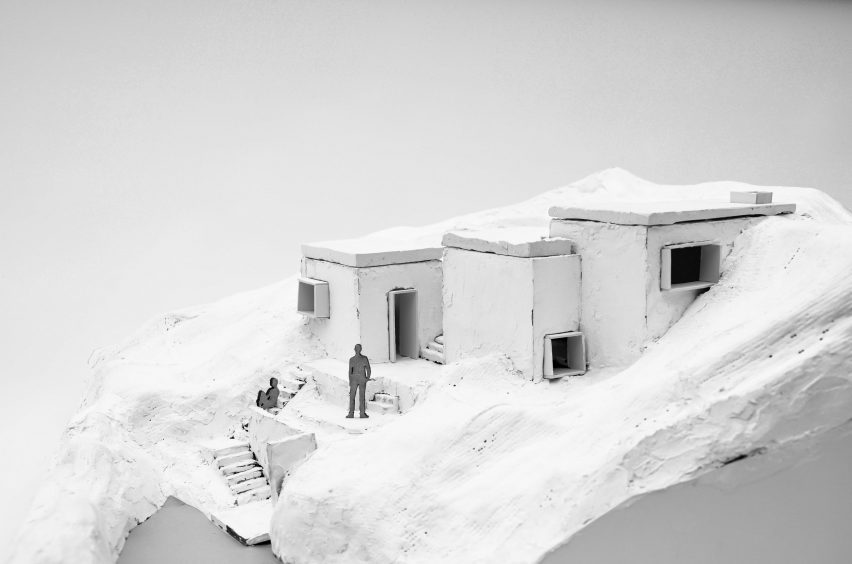
Working Retreat by Helena Gatland
During her time studying architecture at Oxford Brookes University, Helena Gatland created a model for a stone dwelling and workspace situated in the limestone coastline of the Spanish island of Majorca.
The model displays a block-like building, as well as the topographical site it is nestled into, including steps and terraces that are made from white plaster.
"We have a continuing fascination with the landscapes, the climate and the material of place," said Gatland.
"Throughout the world, the various intersection of these elements generates unique building cultures, distinct vernaculars and local character. "
Student: Helena Gatland
School: Oxford Brookes University
Course: BA (Hons) Architecture
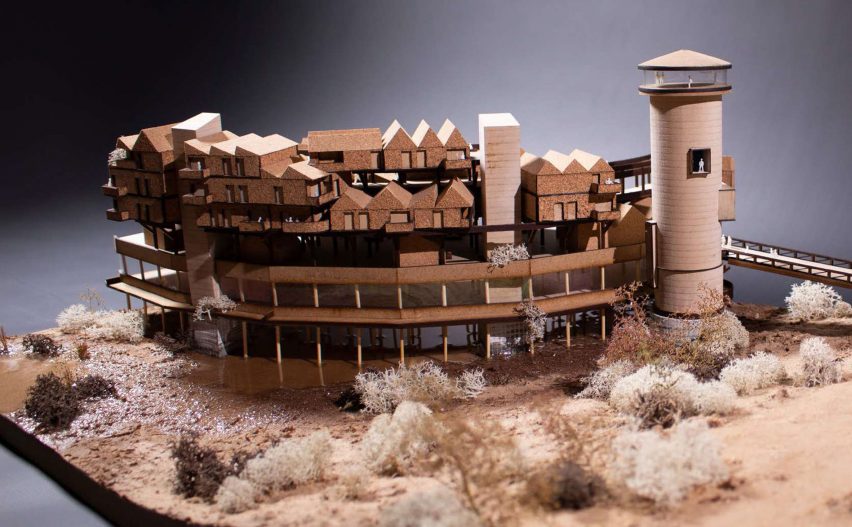
The Eco-Deconstructivist Design Handbook by Daryl Quayle and Elliot Flynn
Architecture students Daryl Quayle and Elliot Flynn added miniature shrubs and wet soil detailing to their model that represents a scheme for a mixed-use site in a former abattoir.
The project site was converted into a learning centre and community hub that is accessed via a gently inclined footbridge.
"The entire East Manchester area is redeveloped to remove the road network and create huge amounts of wild habitats for non-humans, including wetland, scrubland, mixed woodland and lush brownfield sites – the disused Manchester Abattoir site is repurposed to create space accessible to humans and non-human communities in the area," said Quayle and Flynn.
"The ground level has a wetland, while the first floor has become a dedicated community hub – featuring space for local scout groups, recreational activities and hot-desking, all of which are facilities sorely lacking in the Bradford area today."
Students: Daryl Quayle and Elliot Flynn
School: Manchester School of Architecture
Course: Master of Architecture
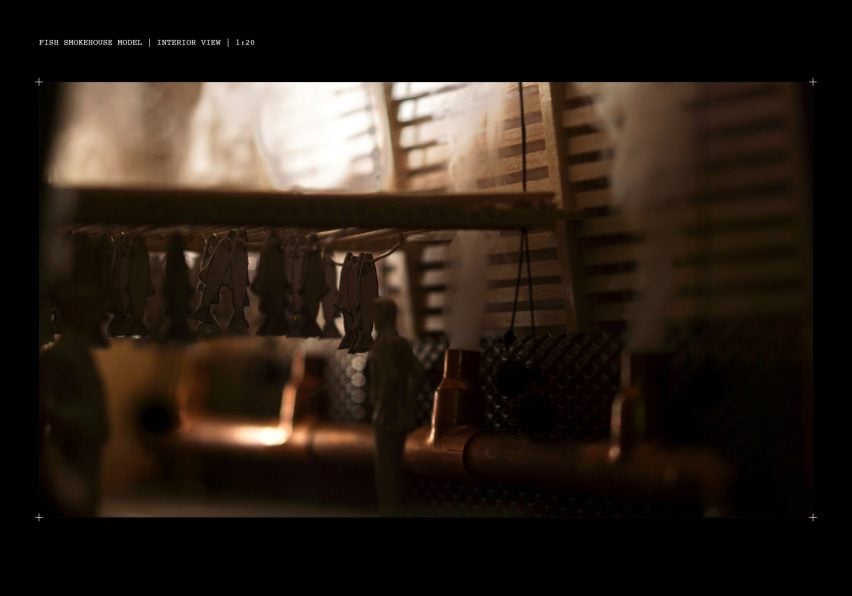
Amphibious Hydrological Dwelling by Oli Rash
Architecture student Oli Rash created an atmospheric model of a brewery from copper piping and plywood.
The brewery is intended to be situated in an ex-industrial, riverside area of Norwich, and aims to celebrate beer brewing and fishing – two local trades.
"This proposal draws upon the brewing history of the local area, intricately connecting the processes of making lambic beer and fishing," said Rash.
"In addition to providing an educational environment in which these processes are made visible to the public, and local communities, this intensely detailed and exceptionally well-researched proposal engages with the wider ecology of Norfolk, where local farmers share their growing, fertilisation and harvesting procedures in exchange for spent grain, a byproduct from the brewing process, which can be used for animal feed."
Student: Oli Rash
School: Oxford Brookes University
Course: BA (Hons) Architecture
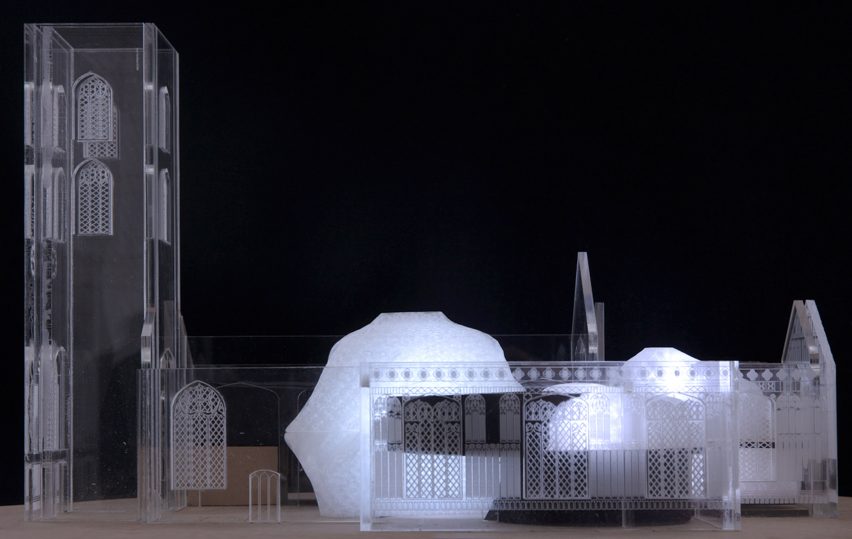
Battle of the Tenses by Georgia Keeble
The adaptive reuse of a 15th-century flint church in Norwich was the focus of this project by interior design student Georgia Keeble.
Within the deconsecrated building, Keeble proposed the installation of a series of glowing white volumes that simulate the descent into ancient flint mines.
"Visitors can interact with artefacts and replicate cave art and flintknapping techniques as they mine ever deeper through winding and cavernous spaces," said Keeble.
"This experience brings to light that the Neolithic flint mines are the earliest industrial monuments in Britain, first being excavated around 4,000 years ago, and promotes a renewal in the use of flint to build structures unique to the area."
Student: Georgia Keeble
School: Norwich University of the Arts
Course: BA (Hons) Interior Design
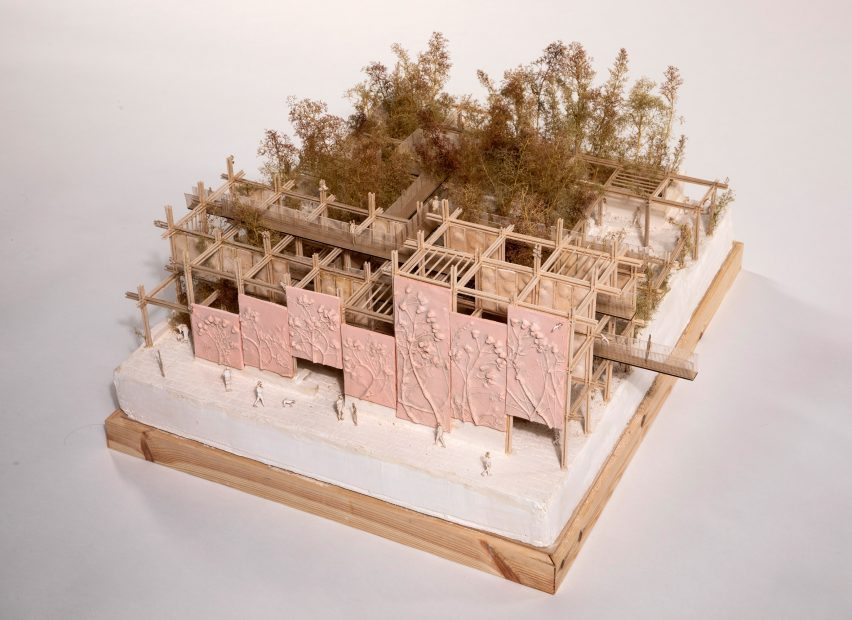
St Augustine Road by Jessika Elalam
As part of her architecture master's degree, Jessika Elalam has proposed a project that converts a car park in Leicester into a catered to the care of people with respiratory issues.
Mycelium panels act as both decoration and air filters, represented by clay slabs in the model, which also features delicate wooden structures and small-scale trees and bushes.
"Inspired by monastery healthcare gardens, the centre merges the latest medical science together with nature-based healing approaches," said Elalam.
"Exposed precast panels, embellished with medicinal plant patterns, form a protective layer while pink tones pay tribute to the polluted past of River Soar, Leicester, England."
Student: Jessika Elalam
School: De Montfort University
Course: Master of Architecture

Buried Landscapes by Keenan Ngo
Master of Architecture student Keenan Ngo aimed to recognise and reinstate the historical significance of the Carrying Place Trail, a track formed and used by people before the arrival of settlers.
The track, situated between Toronto and Lake Simcoe, is represented by a mixed media model made from a centrally-placed collection of bark encircled by an etched perspex sheet.
"How can architecture reclaim urbanism and reconstruct landscapes to uncover history? How do we respect what came before and make connections between people, community and place for a sense of being?" asked Ngo.
"Four stations acknowledge scars in the land and catalogue techniques for addressing disruptions in the landscape. They are the first of many that begin a process of transformation."
Student: Keenan Ngo
School: University of Toronto
Course: Master of Architecture
Partnership content
These projects are presented in school shows from institutions that partner with Dezeen. Find out more about Dezeen partnership content here.